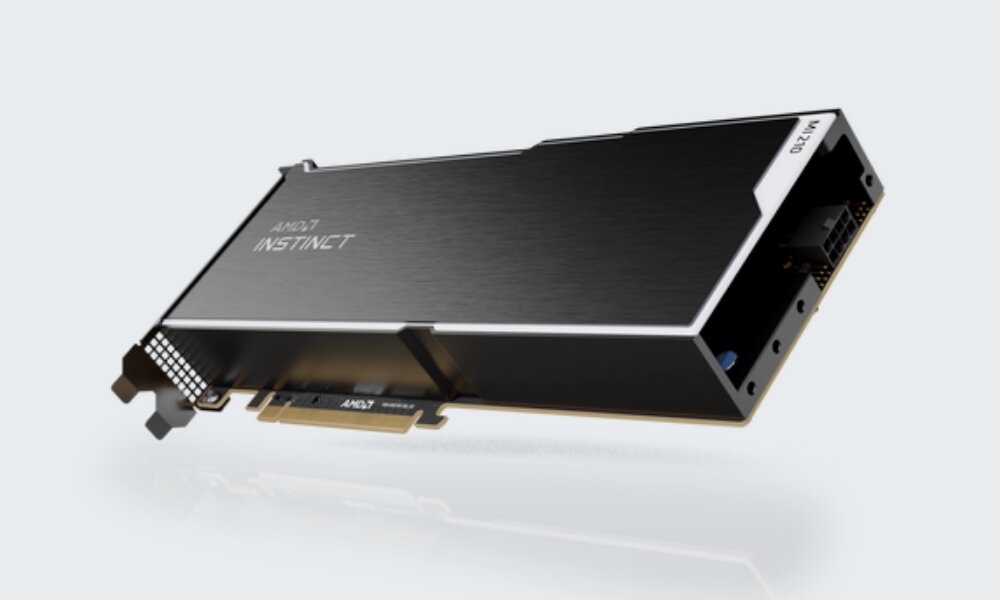
AMD has unveiled several novelties focused on bring exascale technology to more of your customers dedicated to high-performance computing and Artificial Intelligence, so that they can meet their demand for workloads in accelerated computing data centers, in addition to reducing the time it takes to obtain information and data. To do this, on the one hand, it has announced a boost to its AMD Instinct ecosystem, and on the other, it has launched the AMD Instinct MI210 accelerator and the ROCm 5 software tool.
The new one AMD Instinct MI210 graphics accelerator It belongs to the MI200 family, and is designed both to optimize the execution of workloads that require state-of-the-art accelerated processing due to high-performance computing and Artificial Intelligence, and to access exascale technology in a commercial format. Ready for accelerated deep learning training, it is powered by AMD CDNA 2 architecture and features mixed-precision capabilities based on AMD Matrix Core technology. It features a PCIe form factor, up to 1.6TB per second memory bandwidth, 104 compute units, 6,656 stream processors, and 64GB of HBM2e ECC memory.
The AMD ROCm open software platform is built on numerous applications and libraries that power leading high-performance computing and Artificial Intelligence applications. AMD ROCm 5 is its new version, characterized by having new hardware support for the accelerators of the AMD Instinct MI200 range, as well as for the professional graphics card AMD Radeon Pro W6800. In addition, it also adds support for Red Hat Enterprise Linux 8.5, allowing for better performance on critical workloads, and improves the accessibility of the ROCm platform to developers.
As the number of applications optimized to support AMD Instinct accelerators and ROCm continues to grow, AMD also continues to expand its software ecosystem with several independent software vendors, including Ansys, Cascade Technologies, and Tempo Quest. These offer applications for fast-paced workloads such as computational fluid dynamics, weather forecasting, and computer-aided engineering.
AMD is also giving partners the opportunity to offer solutions to address the challenges of high-performance computing. Among them are Asus, Dell Technologies, Gigabyte, HPE, Lenovo and Supermicro. Also system integrators like Colfax, Exxact, KOI Computers, Nor-Tech, Penguin and Symmetric.
Brad McCredie, Vice President of Data Center GPUs and Accelerated Computing at AMDhighlights that «With twice as many platforms available compared to our previous generation accelerators, growing adoption of HPC and AI applications, and new support from commercial software vendors on key workloads, we continue to drive accelerator adoption AMD Instinct MI200 and ROCm 5 software exosystem. Now with the addition of the AMD Instinct MI 201 accelerator to the MI200 family, our customers can choose the accelerator that works best for their workloads, whether they need next-generation accelerated compute for HPC and AI workloads as if they want access to exascale technology in commercial form«.



